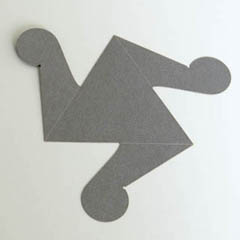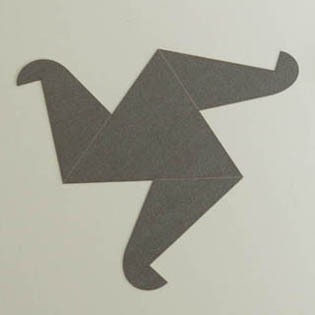 |
 |
 |
 |
 |
 |
 |
|
|
|
 |
|
|
 |
|
1.3. The Elevated Platonic Solids. To build the models of the Elevated Platonic Solids (Figure 5) we need only three different elements that have to be glued together. Because I was not happy with this solution, which especially at workshops caused a lot of trouble, I decided to develop the element in such a way that glue was no longer needed. This resulted in the element of Figure 6. |
|
|
 |
 |
|
|
|
 |
|
 |
|
|
Figure 5: Elevations of the Platonic solids.
|
Figure 6: Element for construction.
|
|
| This new element, based on the equilateral triangle, can be used to build the models of da Vinci’s tetrahedron, octahedron and icosahedron (Figure 7). Note that I took the liberty to “elevate” not exactly to the height that Pacioli described. But the original construction can be easily recognized (Figure 8).. |
|
 |
|
|
Figure 7: Da Vinci – Elevations of tetrahedron, octahedron and icosahedron.
|
|
 |
|
|
Figure 8: Models of the elevations of tetrahedron, octahedron en icosahedron.
|
|
| 1.4. Variation of the Shape of the Element. Because, with my way of making the models, the height of the elevation was no longer fixed, I decided to experiment a little more with this height as well as with the shape of the connection part of the elements. In Figure 9a a new shape is shown. To build the model of the elevated tetrahedron you still need four elements, but the elevation height is chosen so that he outer shape is a cube. So with four equal parts we have build a cube now (Figure 9b). |
|
|
 |
 |
|
|
Figure 9ab: The new element and the new model of an elevated tetrahedron.
|
|
 |
|
|
|
|
|
|
|
|
|
|
|
|
|
|
|
|
|





